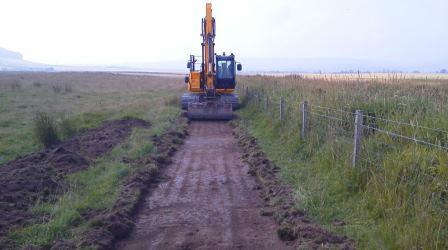Whatever your role in path and bridge construction or maintenance, the CDM 2015 changes will affect you but more importantly they aim to improve health and safety for everyone involved by helping you to:
sensibly plan the work so the health and safety risks involved are managed from start to finish
have the right people for the right job at the right time
cooperate and coordinate your work with everyone involved
have the right information about the risks and how they are being managed
communicate this information effectively to everyone who need to know about the risks
- consult and engage with workers about the risks and how they are being managed.

The main changes and how they affect you
Simplification of the Regulations to make them clearer and easier to understand - the Health and Safety Executive (HSE) has made the Regulations clearer and easier to understand for small and medium size projects. This will suit the majority of path projects, which tend to be small or medium in size
The role of CDM co-ordinator is removed and replaced by ‘principal designer’ - CDM co-ordinator is no longer a duty holder role. If you are a client, you must appoint a designer as a principal designer, when a path project will involve more than one contractor working on site at any time. The reason for the change is to give the responsibility for CDM coordination during the design stage to an individual who has the ability to influence health and safety with the design. It is felt that the role is best carried out by a lead designer
Threshold of CDM coordination appointment for projects where there is more than one contractor working on site at any time - for a path project, where there is more than one contractor working on site at any time, if you are the client, you must appoint a principal designer to plan, manage and coordinate the pre-construction stage of the project. You must also appoint a contractor as a principal contractor to plan, manage and coordinate the construction stage
All projects must have construction phase plans - if you are the client, you must make sure a written construction phase plan is prepared by the contractor or principal contractor before construction stage begins
Threshold of project notification to HSE - if you are the client, you must notify the HSE of the path project, before construction stage begins, if the work will last longer than 30 working days and have more than 20 workers working on site at the same time at any point, or exceeds 500 person days
The requirements of competence are replaced with specific elements of skills, knowledge, training, and experience - if you are the client, you must make sure those to be appointed as duty holders (i.e. designer, principal designer, contractor, principal contractor) can demonstrate they have the skills, knowledge, training, and experience to carry out the work properly and safely
The Approved Code of Practice (ACoP) is substituted with legal guidance and targeted industry guidance - the existing CDM ACoP has been replaced with HSE Legal Series Guidance and CITB Industry Guidance. The guidance is simpler for everyone to understand. Smaller and simplified ACoP may be produced in 2016.
- The requirement for information, instruction, training and supervision to demonstrate capability - anyone working on a path project should be able to demonstrate capability and have the resources to carry out the legal duties of a duty holder role appointed to them. They must be able to provide sufficient information in relation to the preparation, provision and, where necessary, revision of health and safety information, such as pre-construction information, construction phase plan, and health and safety file.
To find out more about CDM 2015, take a look at the CDM page on the technical information A-Z via this link here.